Abstract
OBJECTIVES: Homeless adolescents represent one of the nation's most vulnerable populations. This study reports the 12-month prevalence of homeless episodes among US adolescents. METHODS: Personal, audiotaped interviews were conducted in 1992 and 1993 with a representative household sample of 6496 adolescents aged 12 to 17 as part of the Youth Risk behavior Survey sponsored by the Centers for Disease Control and Prevention. Respondents reported whether they had spent the night in any of a variety of locations other than home during the previous 12 months. RESULTS: Altogether, 7.6% of the youths questioned reported that they had spent at least 1 night in youth or adult shelter (3.3%), public place (2.2%), an abandoned building (1.0%), outside 2.2%), underground (0.4%), or with a stranger (1.1%). Boys were much more likely than girls to report having experienced a homeless episode. CONCLUSIONS: This study suggests that homelessness among adolescents is not simply an urban problem and that prevention programs targeting homeless youths should be implemented nationwide. Additional research is needed to assess the frequency and duration of homeless experiences. Future studies of homelessness in the general population should include questions pertinent to adolescents.
Full text
PDF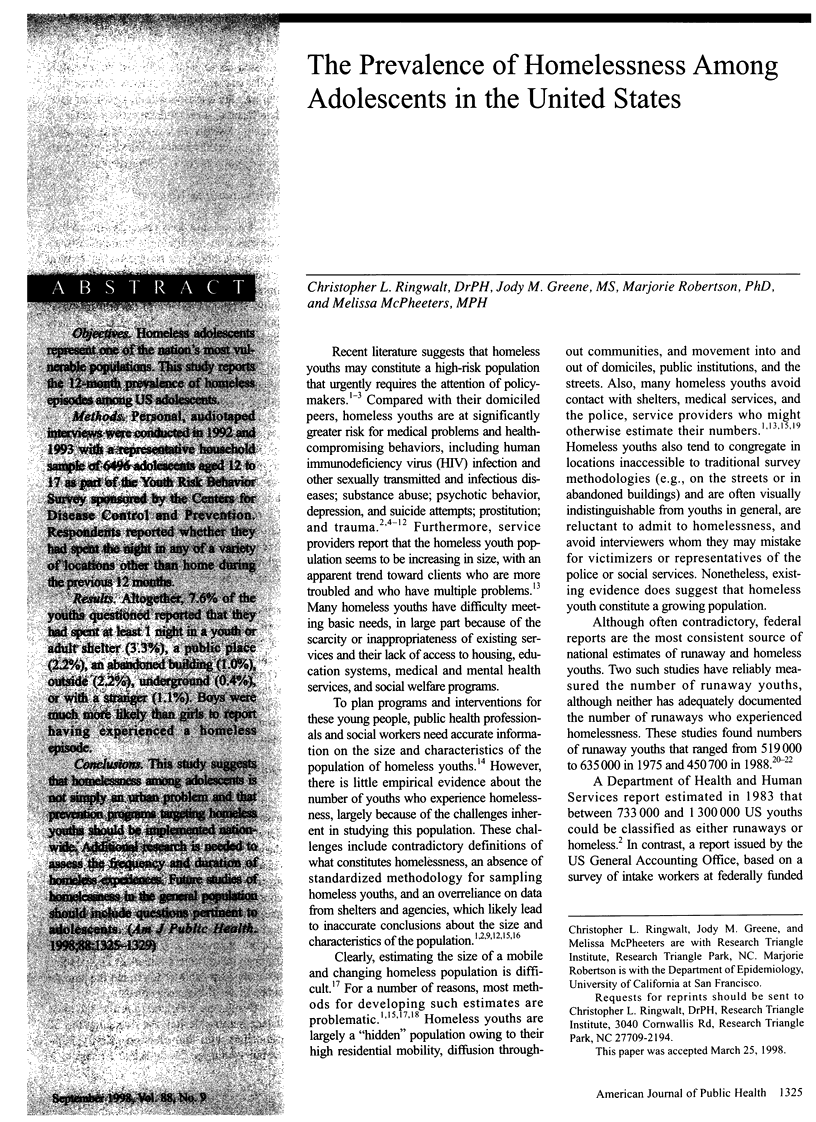
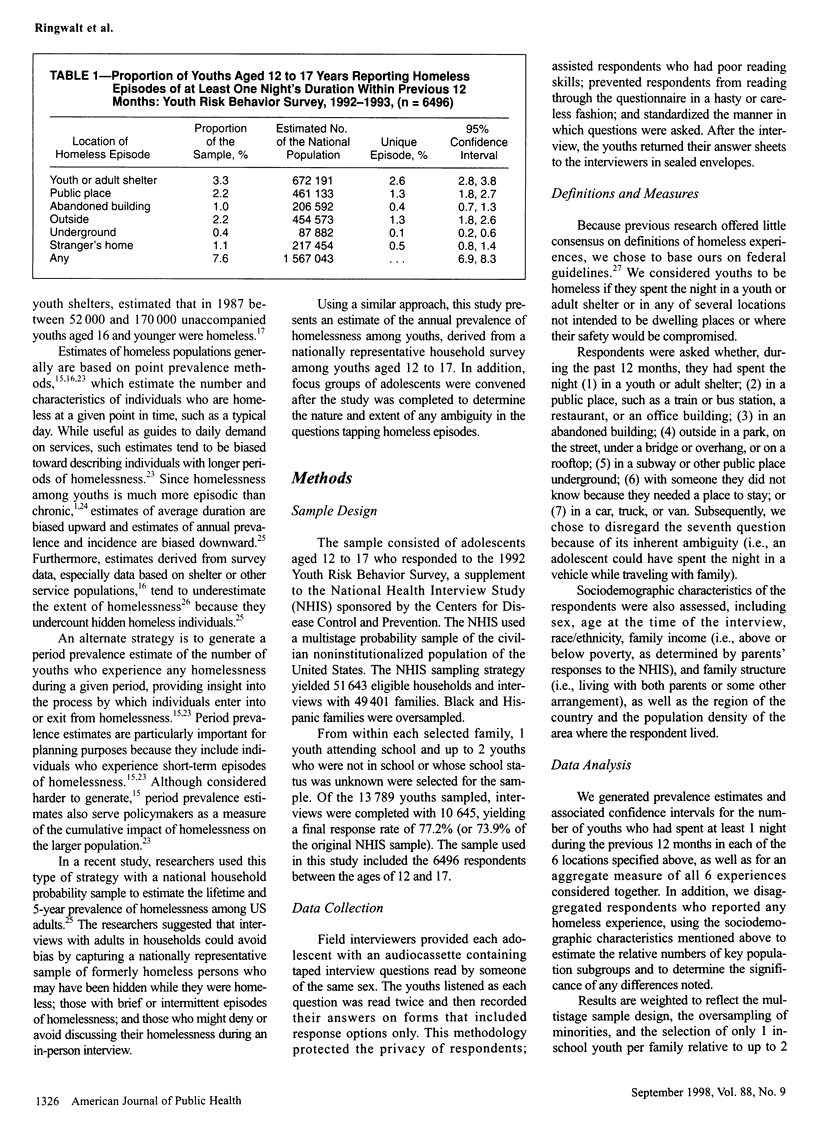
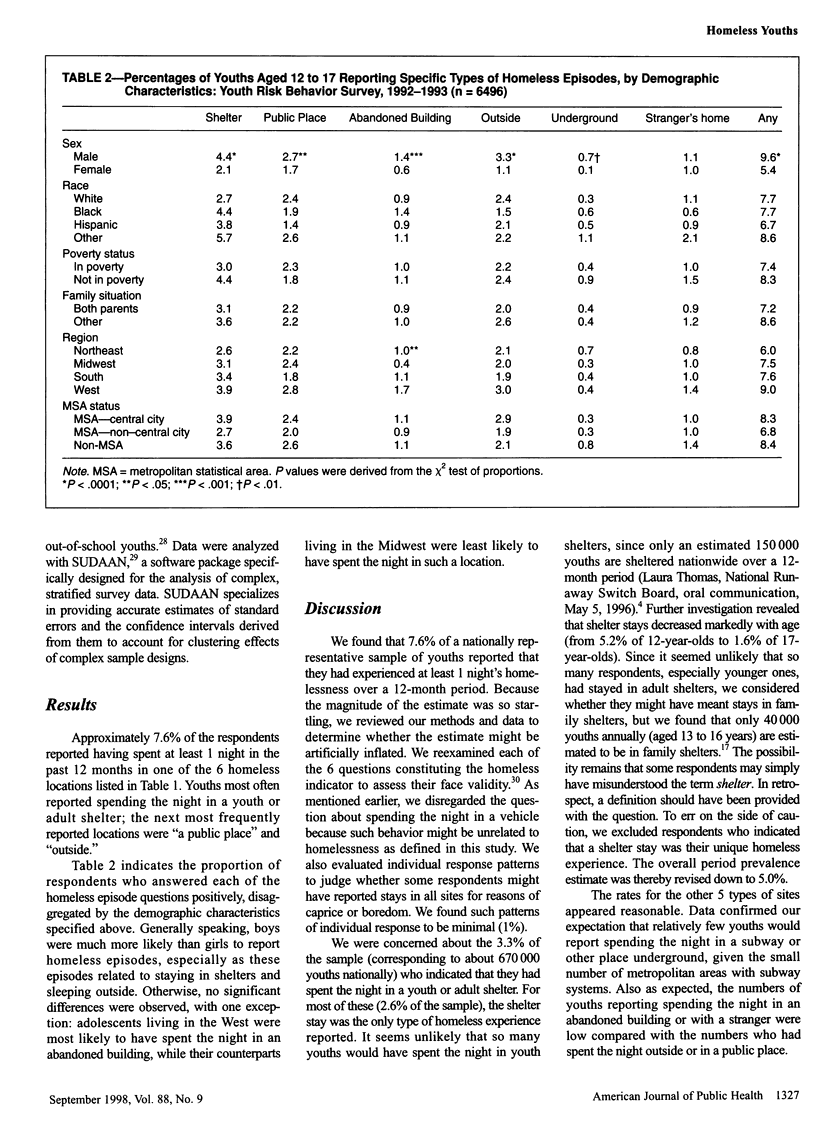
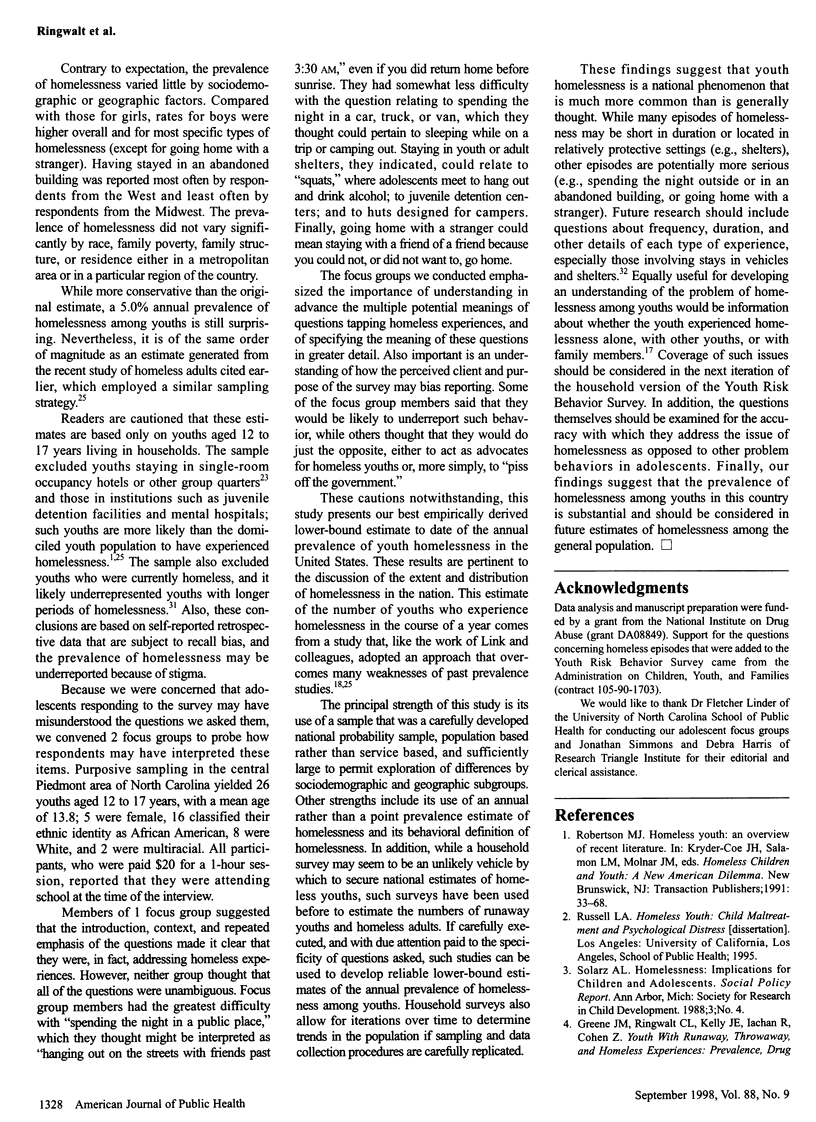
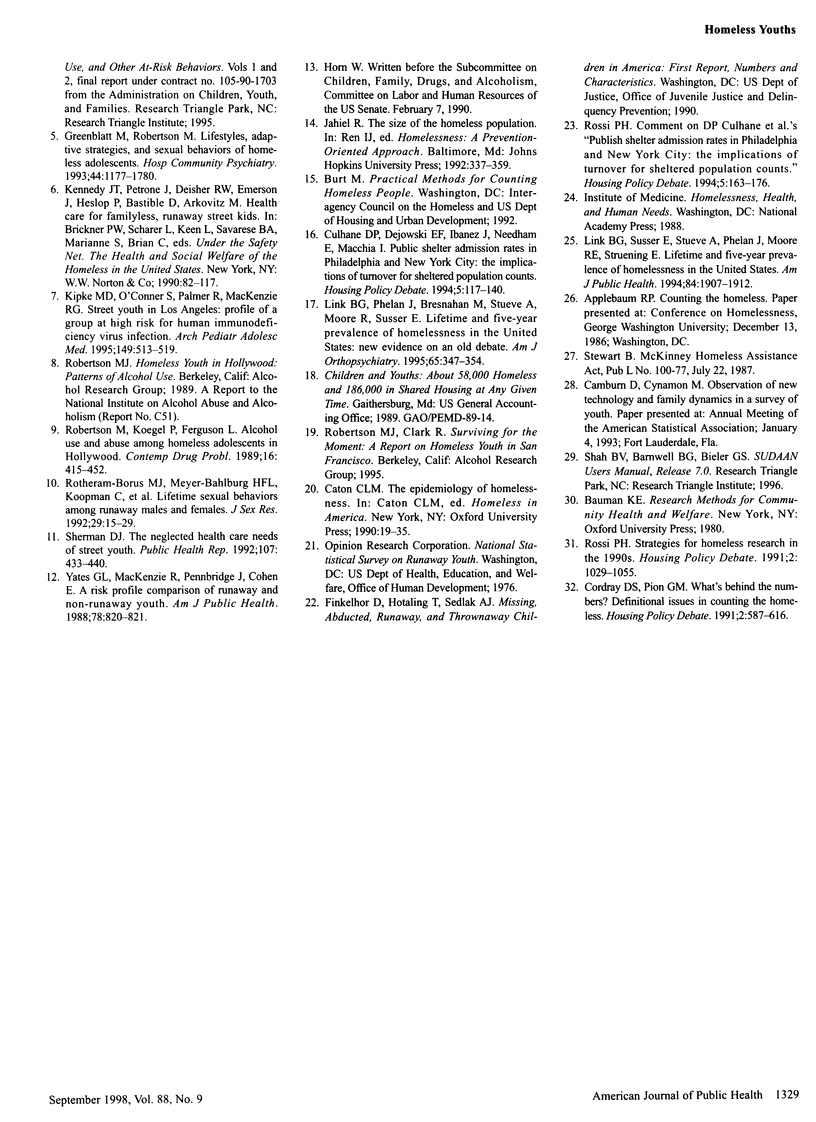
Selected References
These references are in PubMed. This may not be the complete list of references from this article.
- Greenblatt M., Robertson M. J. Life-styles, adaptive strategies, and sexual behaviors of homeless adolescents. Hosp Community Psychiatry. 1993 Dec;44(12):1177–1180. doi: 10.1176/ps.44.12.1177. [DOI] [PubMed] [Google Scholar]
- Kipke M. D., O'Connor S., Palmer R., MacKenzie R. G. Street youth in Los Angeles. Profile of a group at high risk for human immunodeficiency virus infection. Arch Pediatr Adolesc Med. 1995 May;149(5):513–519. doi: 10.1001/archpedi.1995.02170180043006. [DOI] [PubMed] [Google Scholar]
- Link B. G., Susser E., Stueve A., Phelan J., Moore R. E., Struening E. Lifetime and five-year prevalence of homelessness in the United States. Am J Public Health. 1994 Dec;84(12):1907–1912. doi: 10.2105/ajph.84.12.1907. [DOI] [PMC free article] [PubMed] [Google Scholar]
- Link B., Phelan J., Bresnahan M., Stueve A., Moore R., Susser E. Lifetime and five-year prevalence of homelessness in the United States: new evidence on an old debate. Am J Orthopsychiatry. 1995 Jul;65(3):347–354. doi: 10.1037/h0079653. [DOI] [PubMed] [Google Scholar]
- Sherman D. J. The neglected health care needs of street youth. Public Health Rep. 1992 Jul-Aug;107(4):433–440. [PMC free article] [PubMed] [Google Scholar]
- Yates G. L., MacKenzie R., Pennbridge J., Cohen E. A risk profile comparison of runaway and non-runaway youth. Am J Public Health. 1988 Jul;78(7):820–821. doi: 10.2105/ajph.78.7.820. [DOI] [PMC free article] [PubMed] [Google Scholar]


